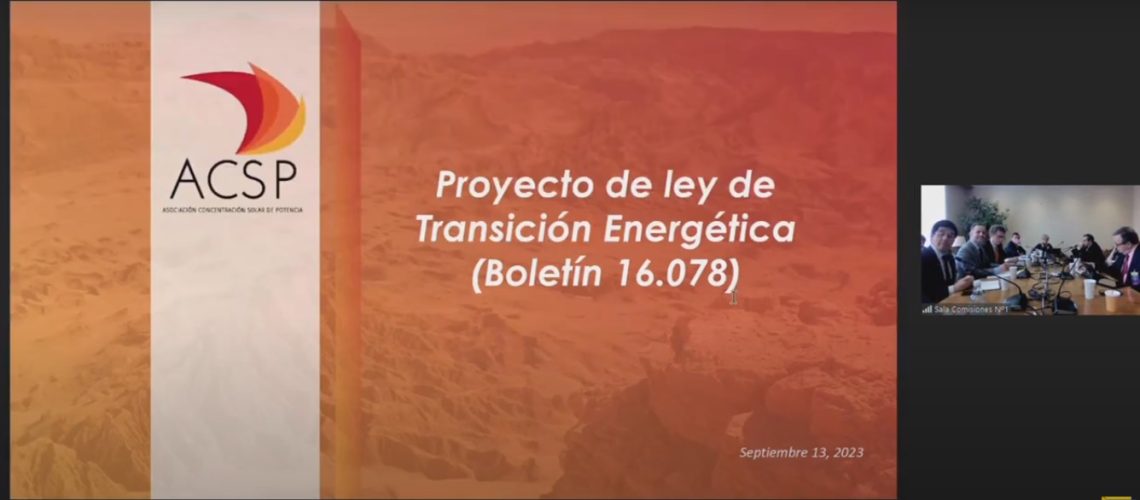The Executive Manager of the Concentrated Solar Power Association, Cristián Sepúlveda, presented to the Senate Mining and Energy Commission the characteristics of the bases of the Storage Tender project that prevent Concentrated Solar Power projects from competing with the other power generation industries.
Cristián Sepúlveda, during his speech, mentioned the positive aspects, such as the reallocation of tariff revenues, security of the matrix and promotion of modernization and innovation, however, he stated that “it is necessary to correct the storage bidding bases.”
In the opinion of Cristián Sepúlveda, it is necessary to modify them, so that “they do not privilege one technology arbitrarily, leaving out others such as Solar Power Concentration.”
Adding that “currently storage as a regulatory concept is associated with batteries, however, there are other technologies that can contribute with this attribute, such as Power Plants with Frequency Regulation Capacity, which are those that can deliver green inertia to our matrix. “Each one of them has particular attributes and it is necessary to value them and end the discrimination that exists in the different tenders.”
During his presentation, the executive showed the advantages that the Concentrated Solar Power industry has, in terms of long-term storage, pointing out that “CSP exceeds 5 hours of storage, allowing the dispatch of what is generated during the day, in night, making CSPs secure and stable storage.”
Another of the aspects analyzed by Cristián Sepúlveda were the deadlines that the Government is establishing, since the projects must be in operation by 2026, “something that CSP and pumping companies cannot achieve, not only because of the investment costs. , but because of how slow it is to obtain permits for onerous use of the land, by the Ministry of National Assets. “This would cause unfair competition.”
The ACSP executive manager concluded by pointing out that “in order for the decarbonization and emissions reduction goals to be achieved, these obstacles must be resolved.”

